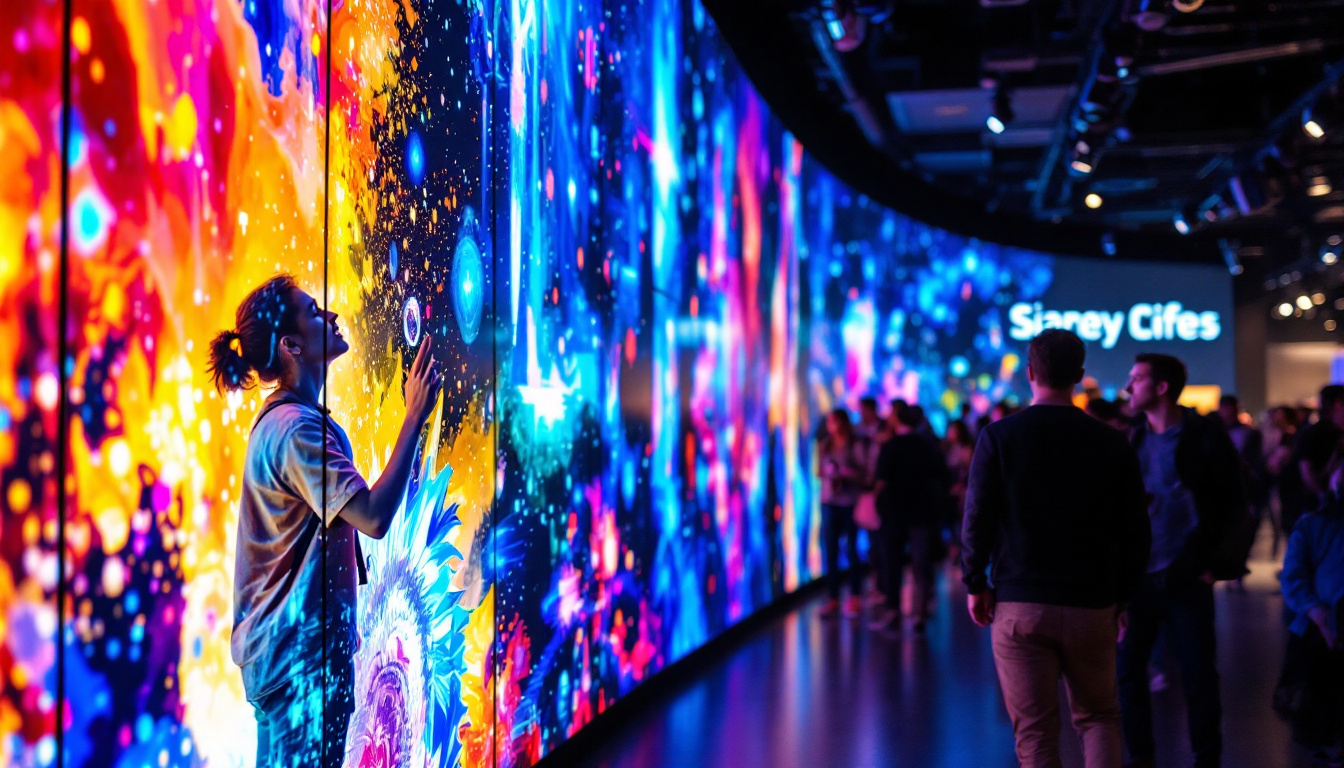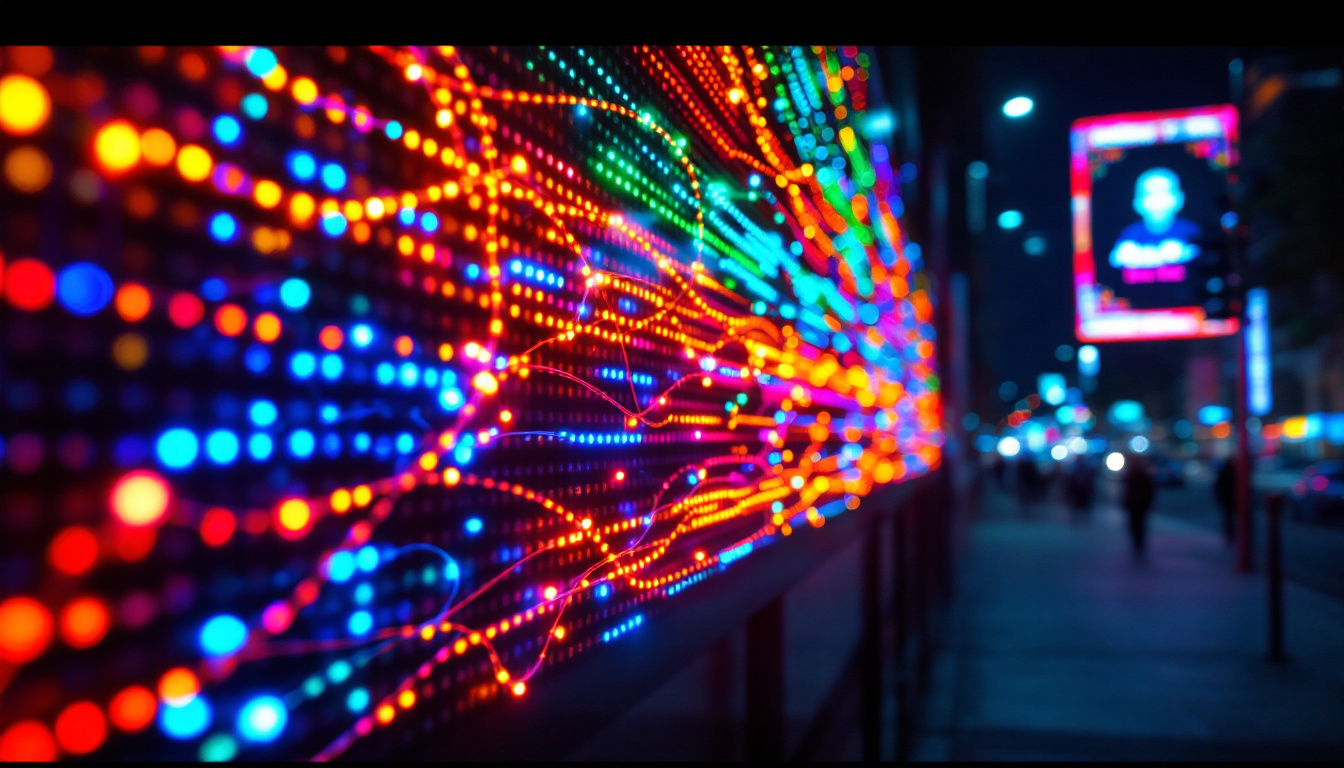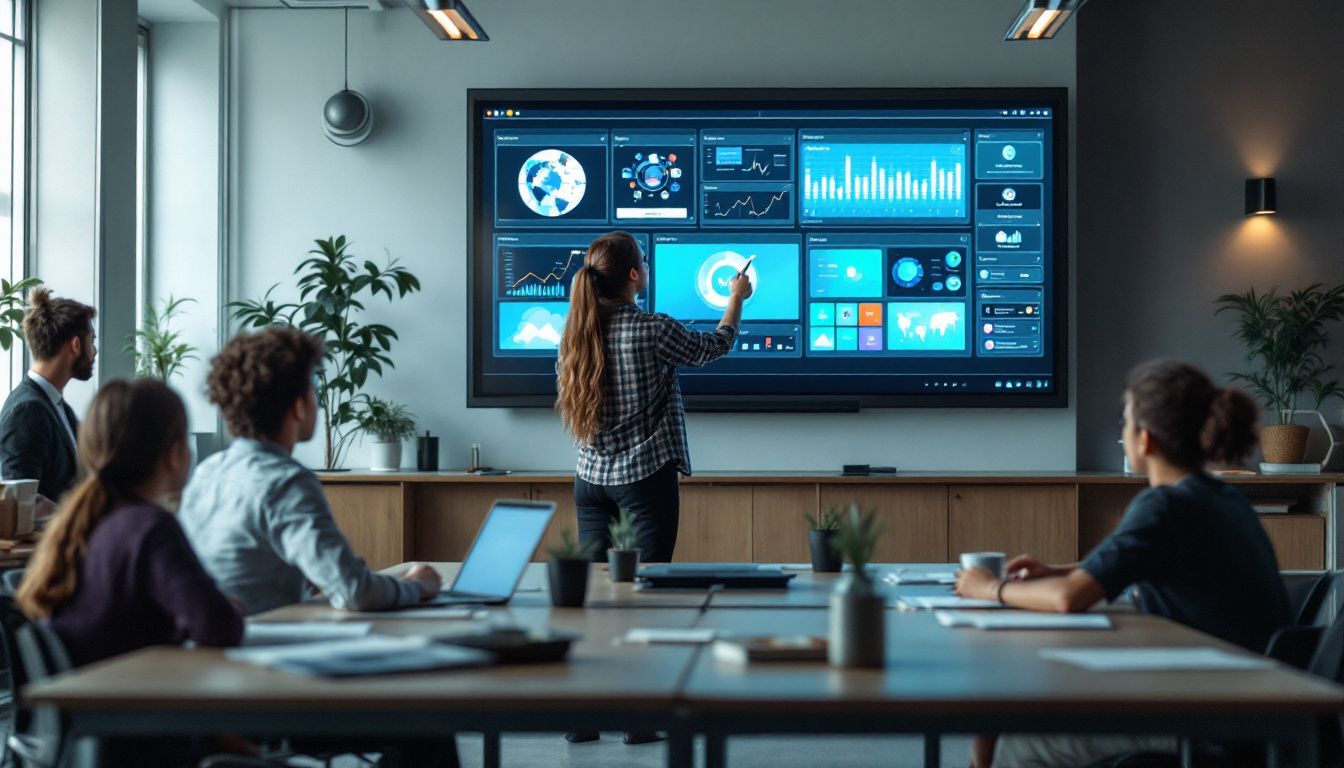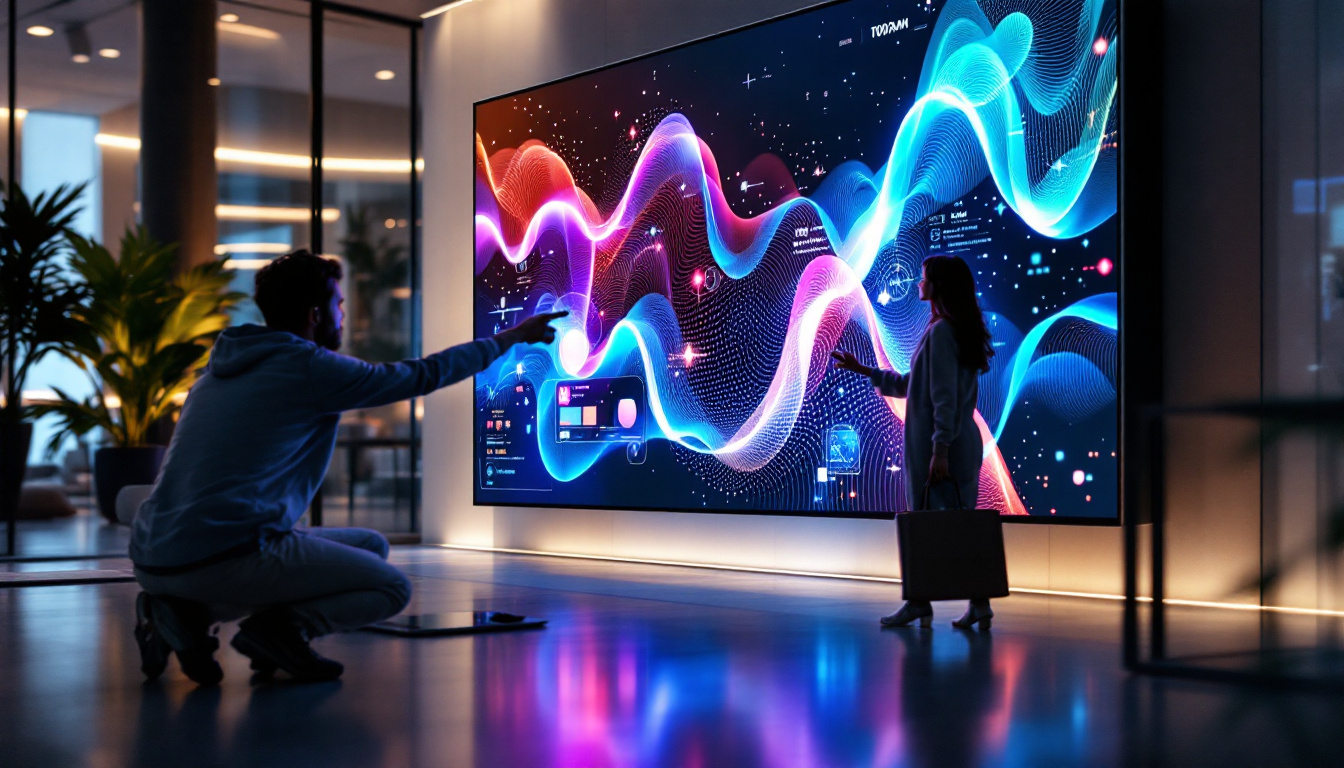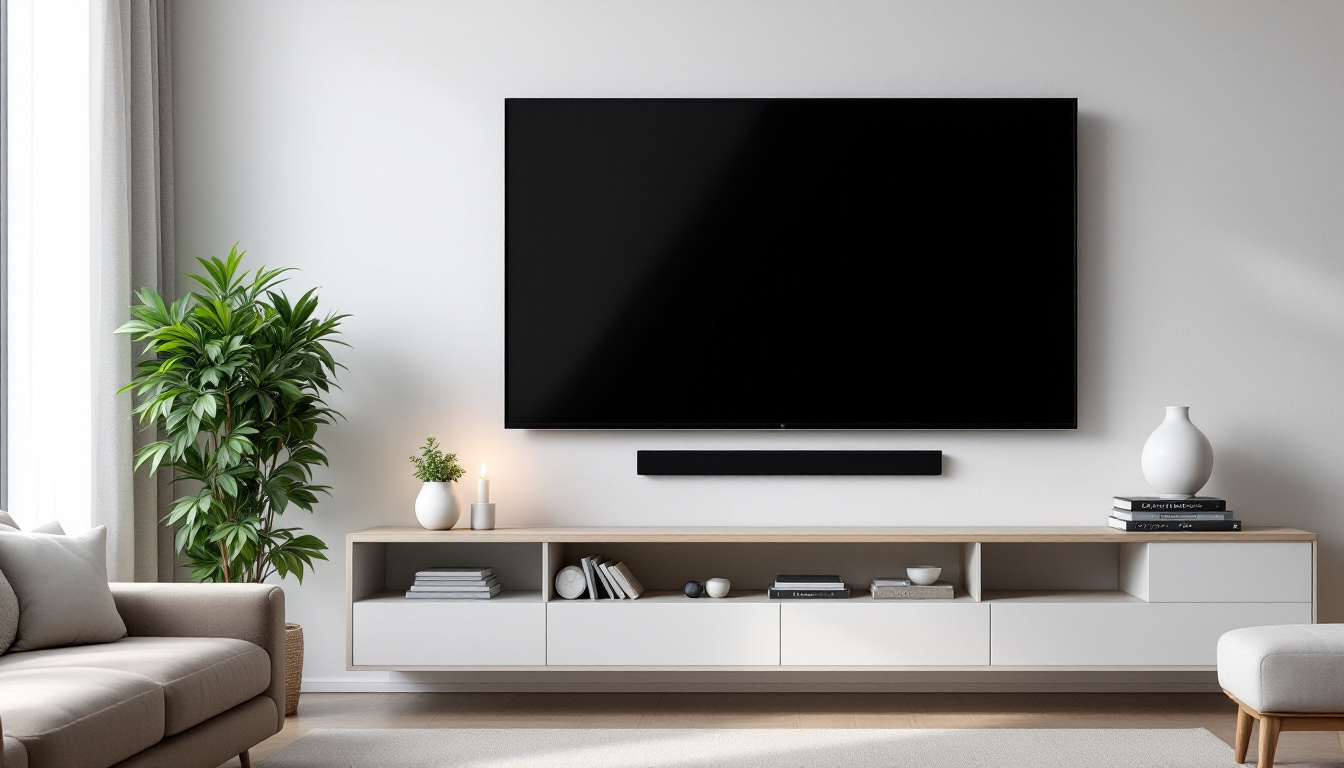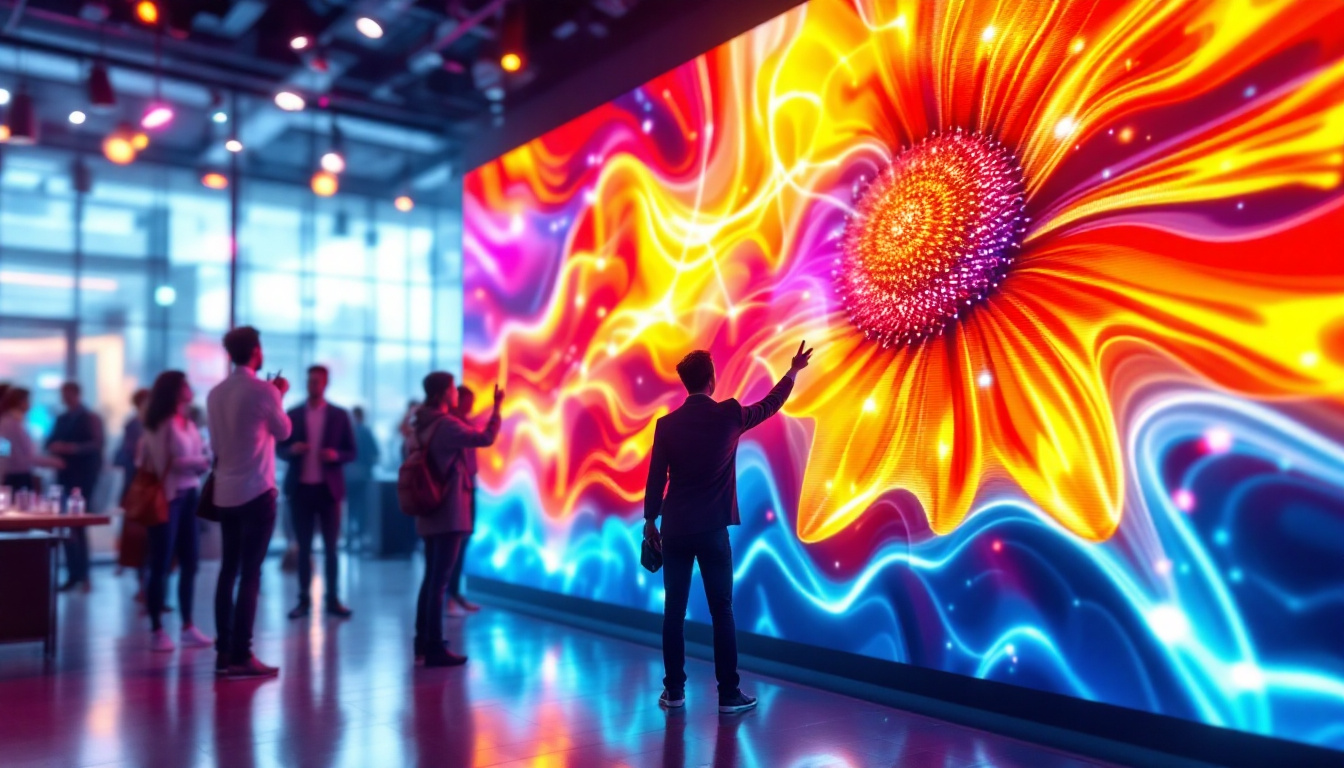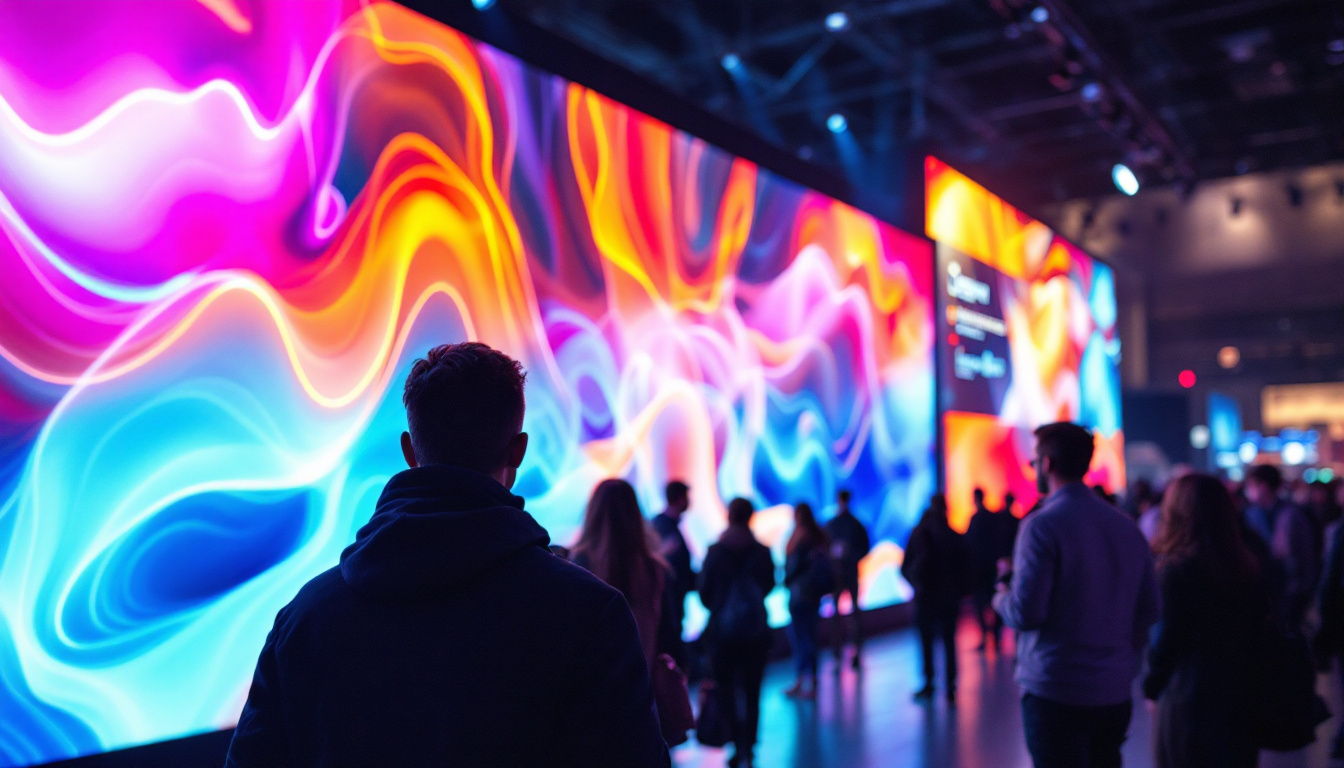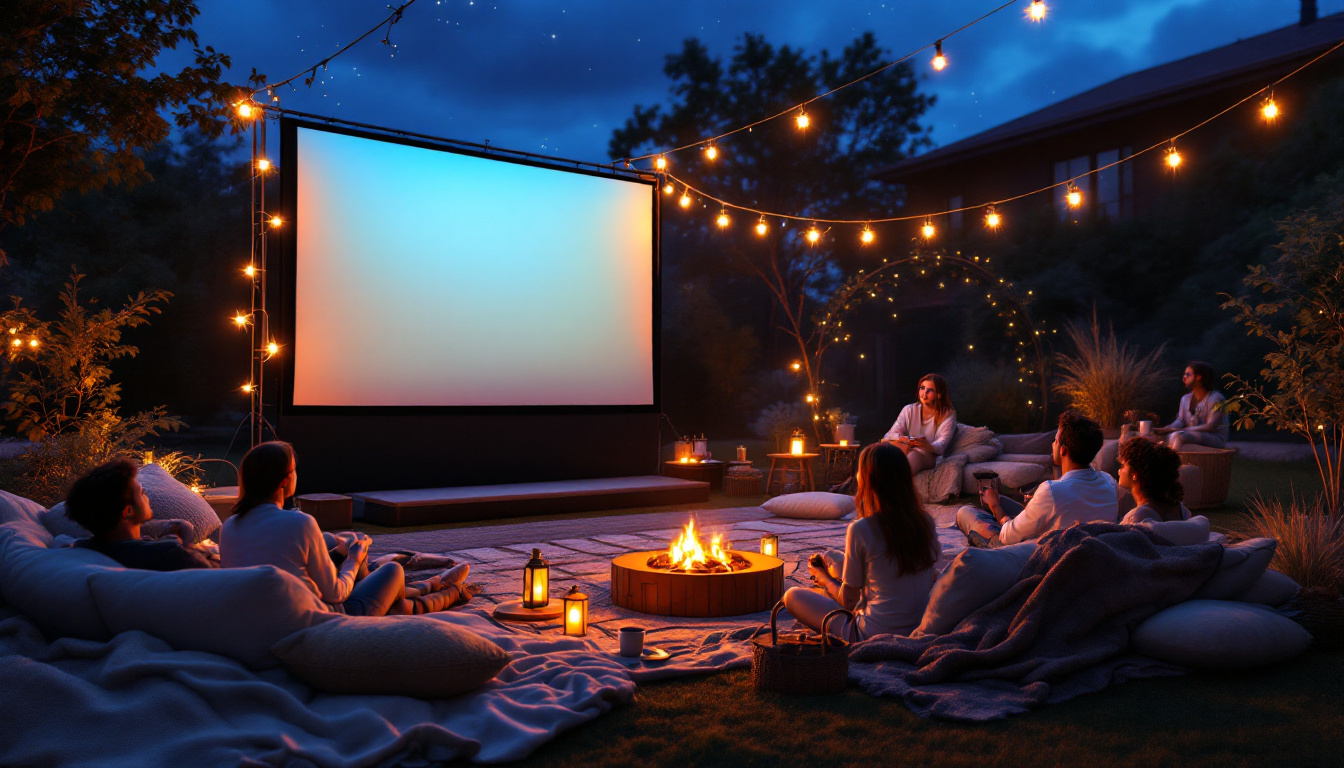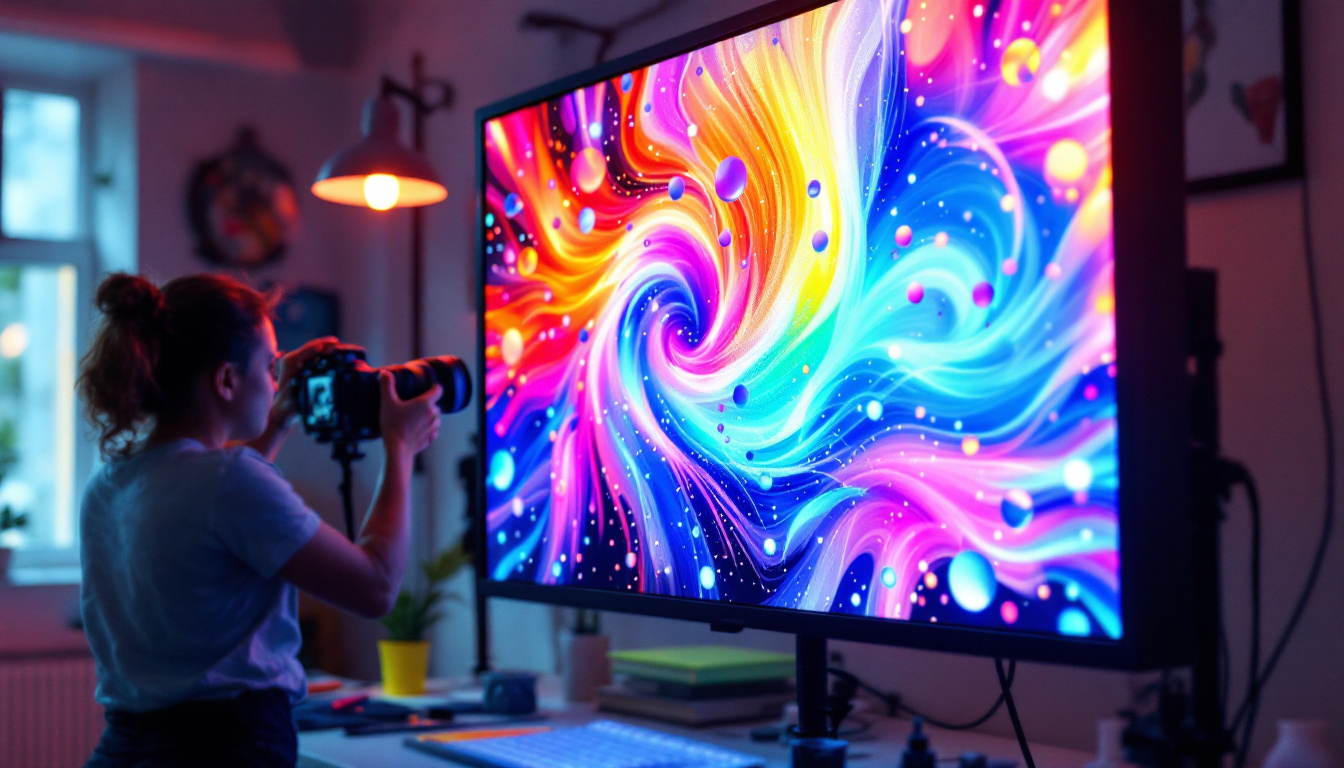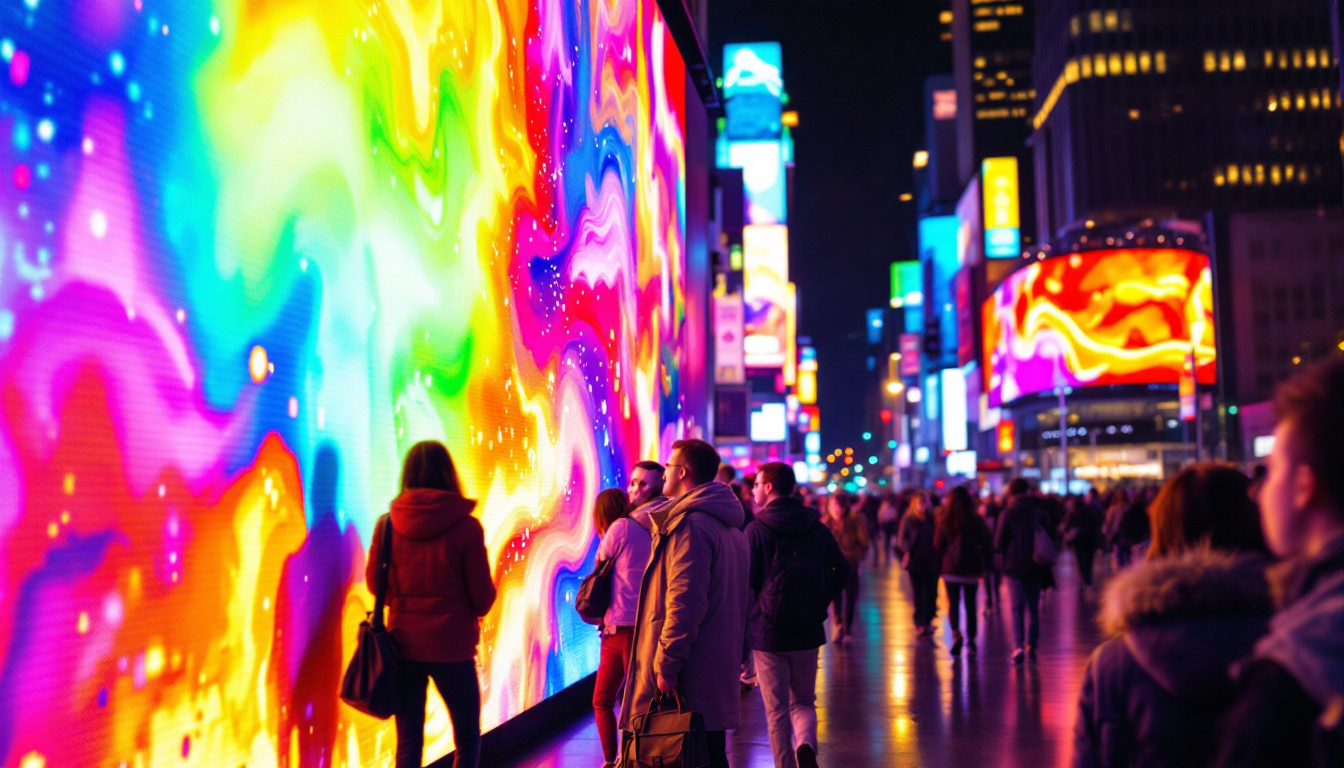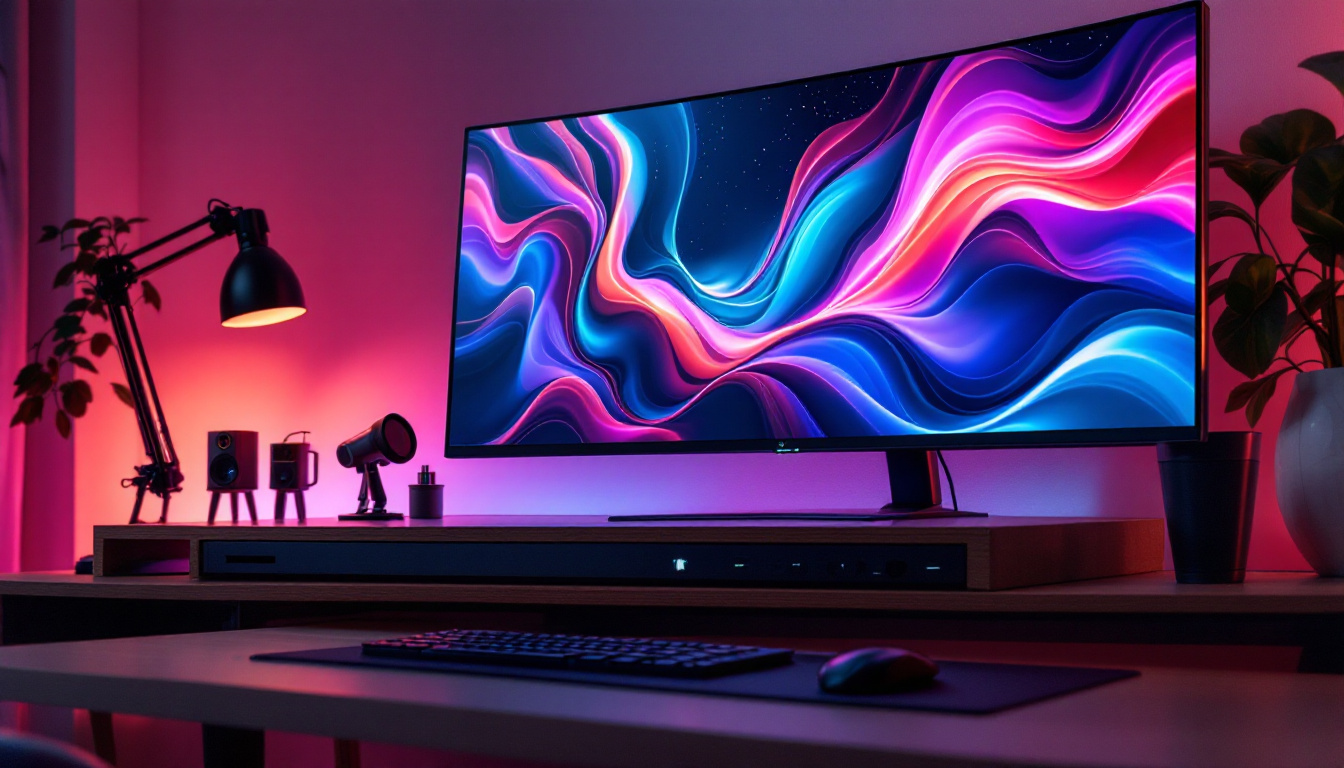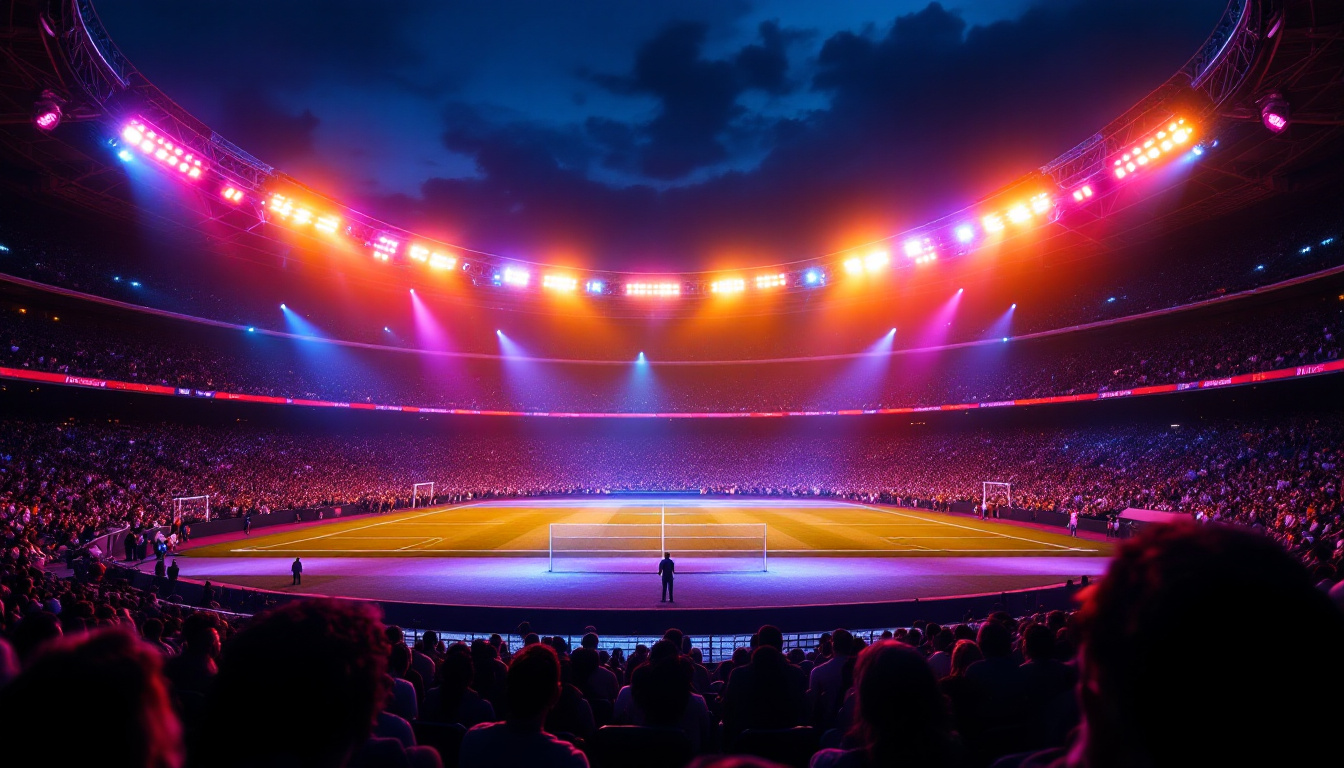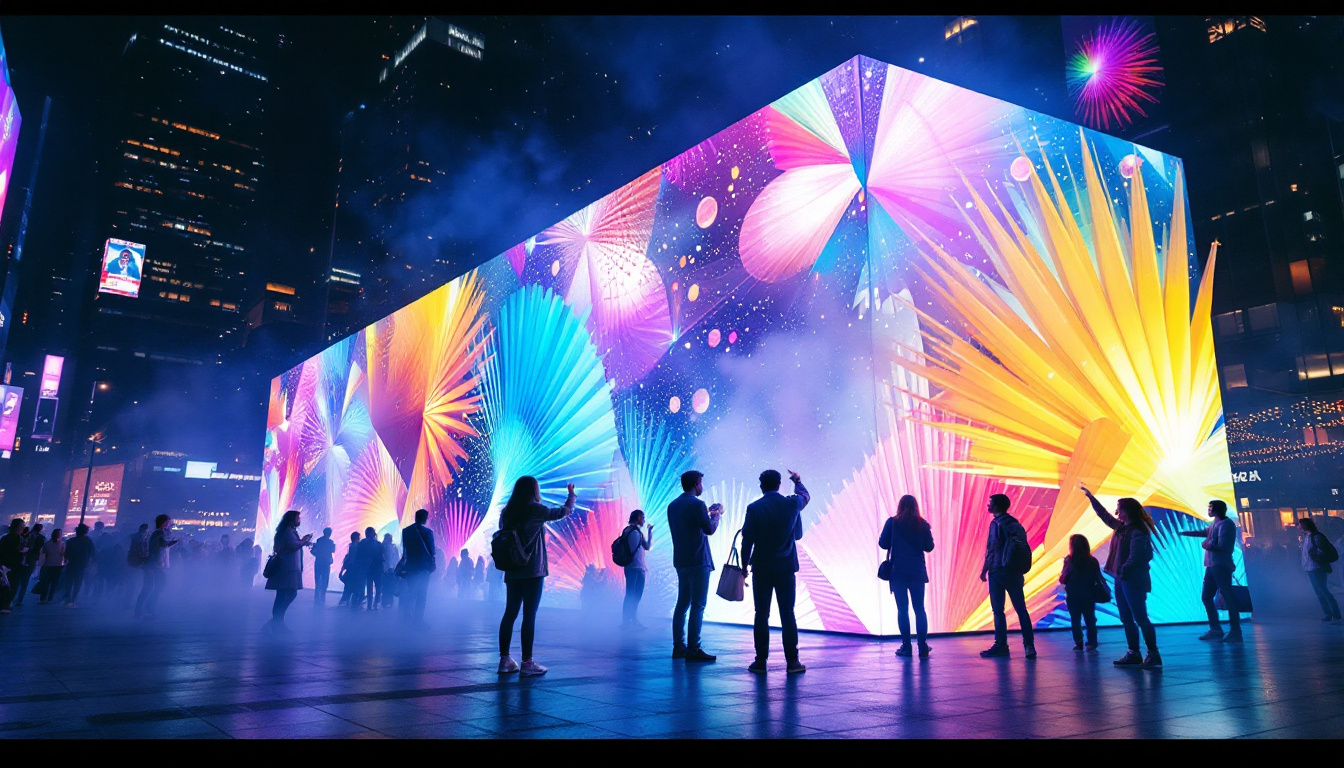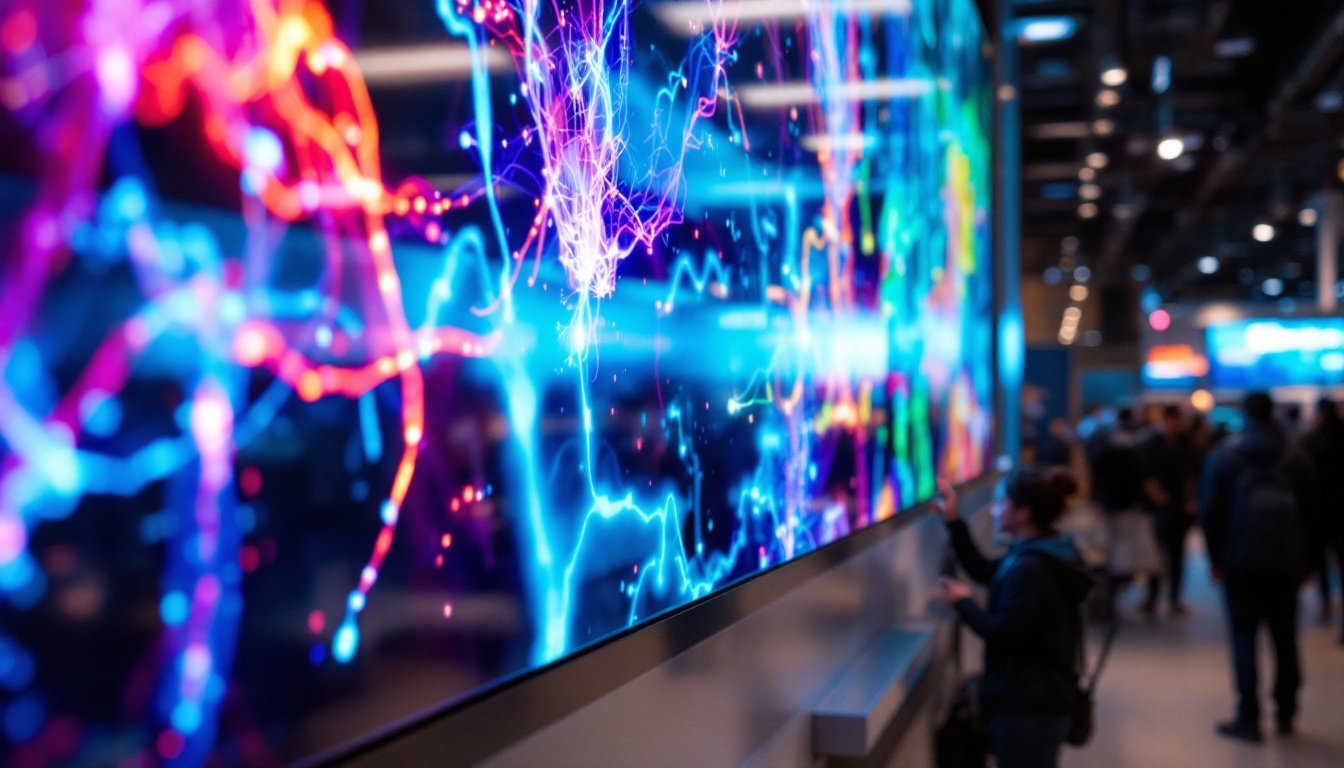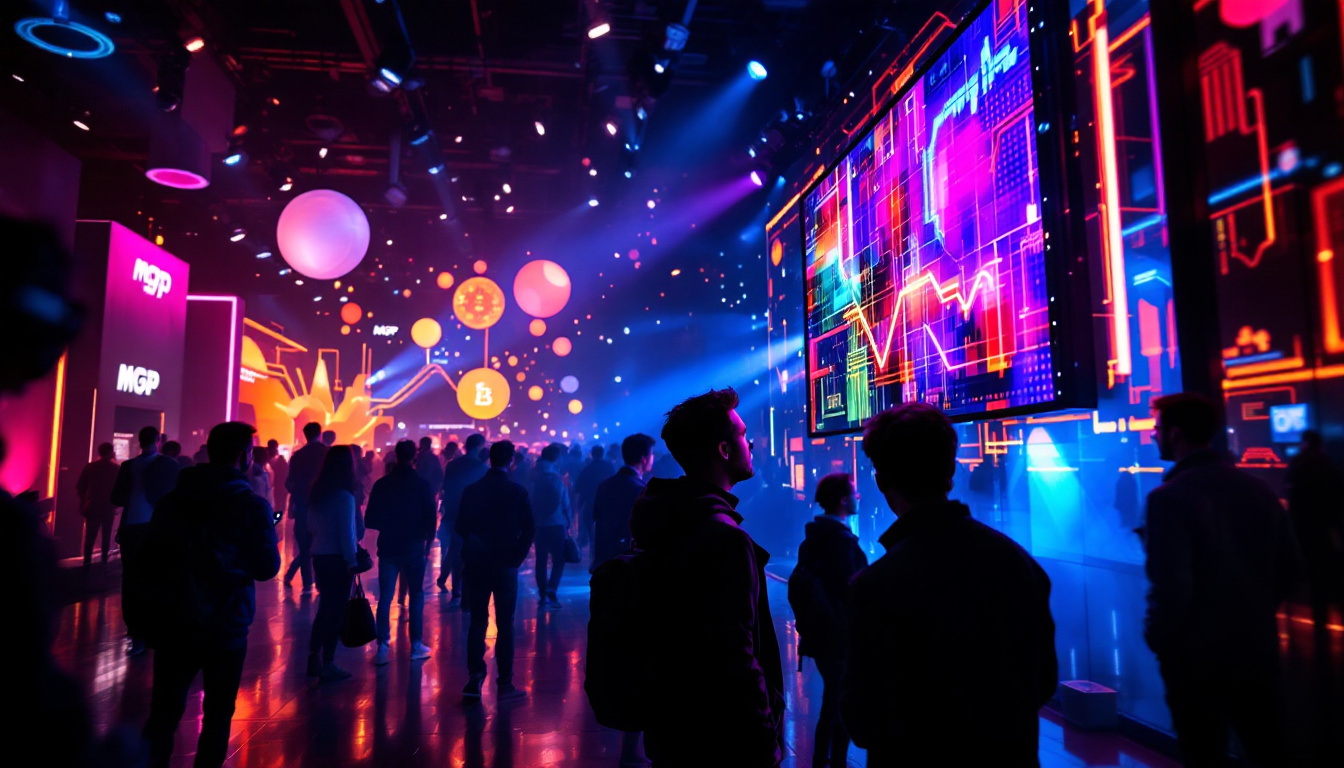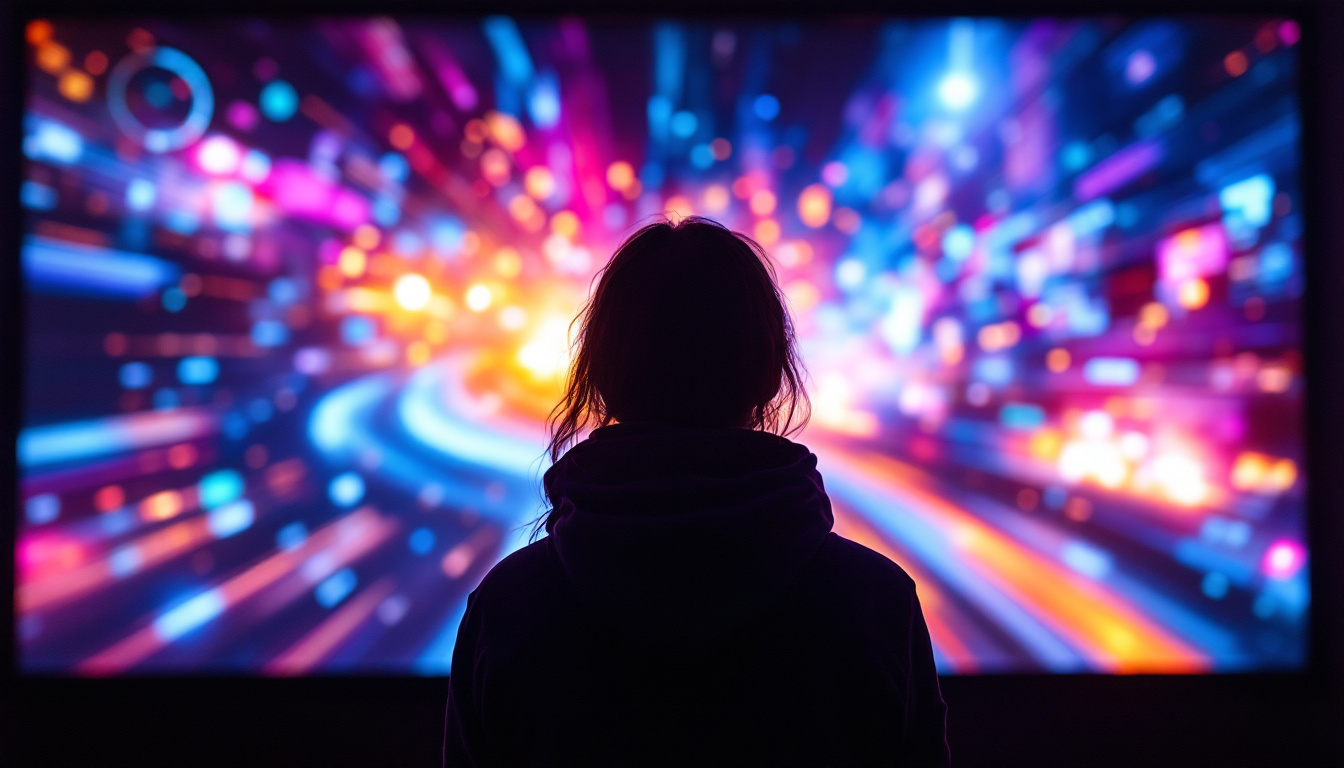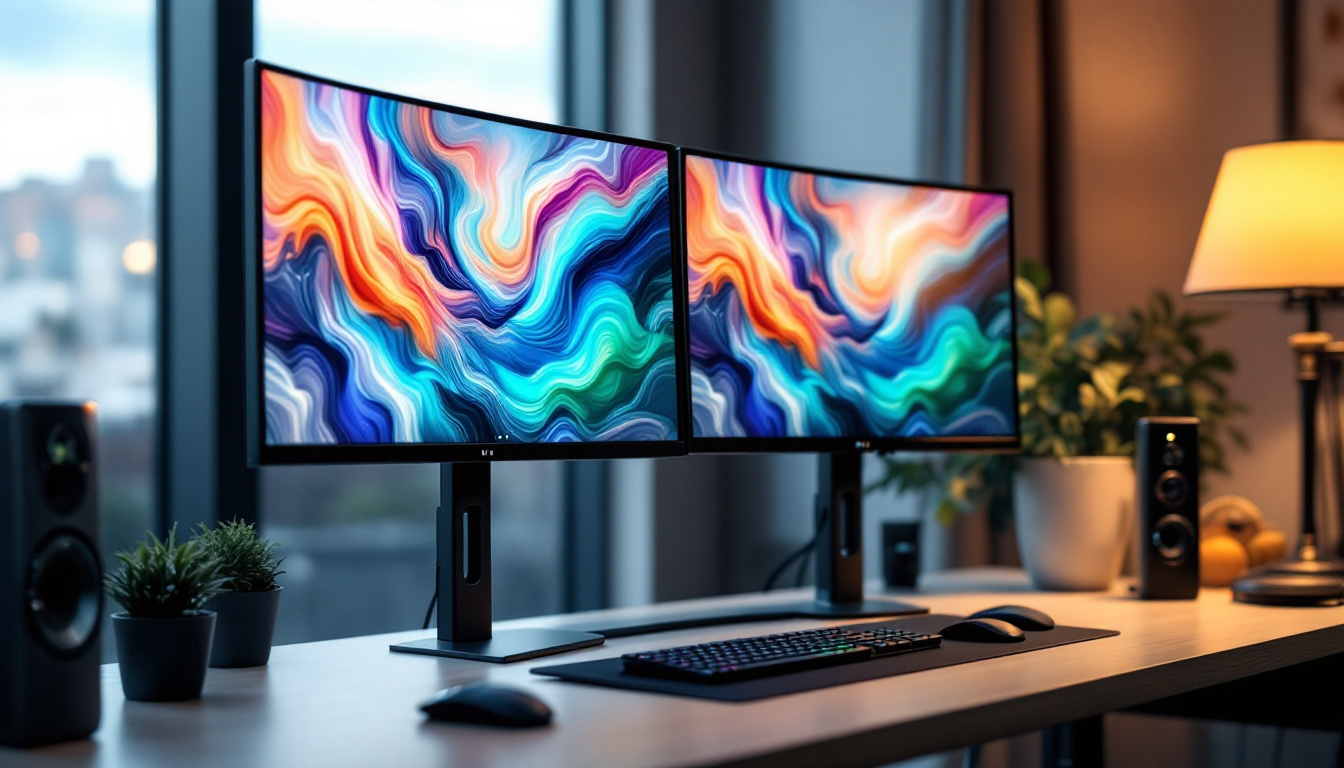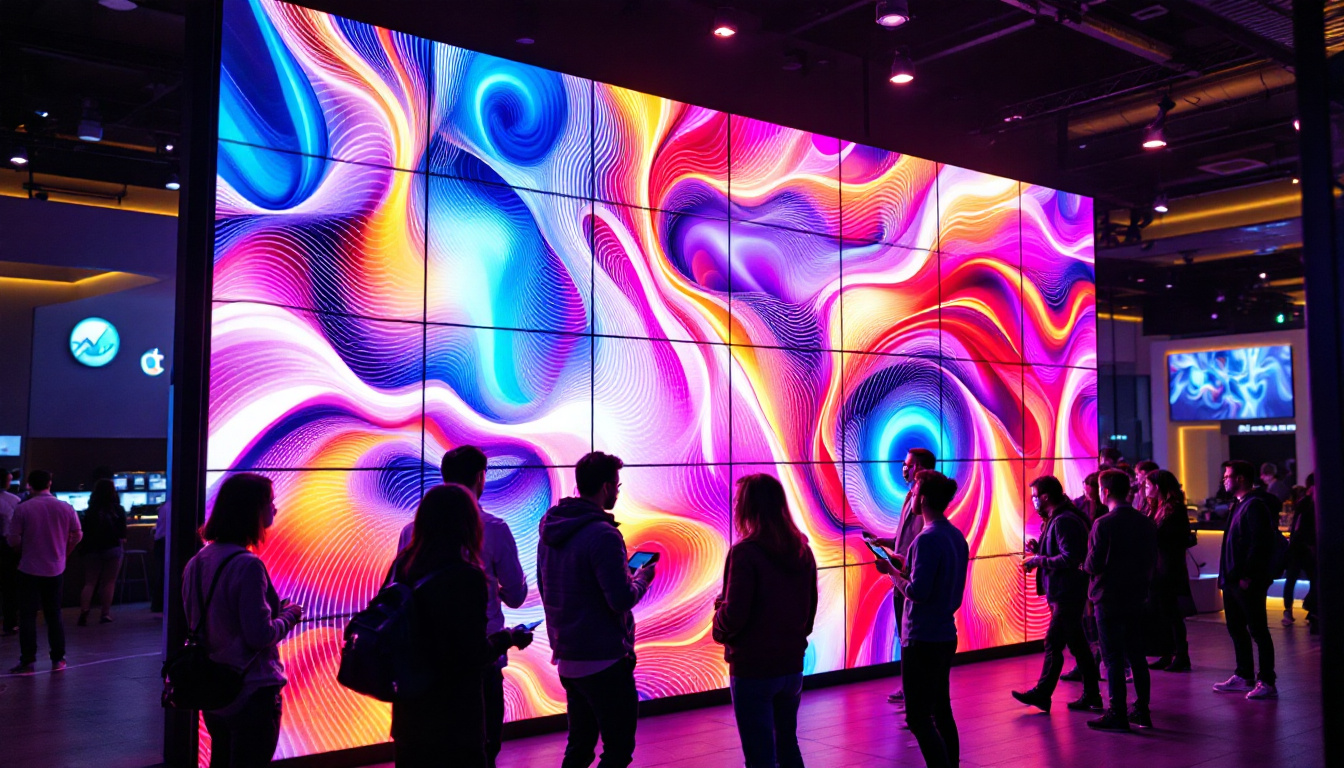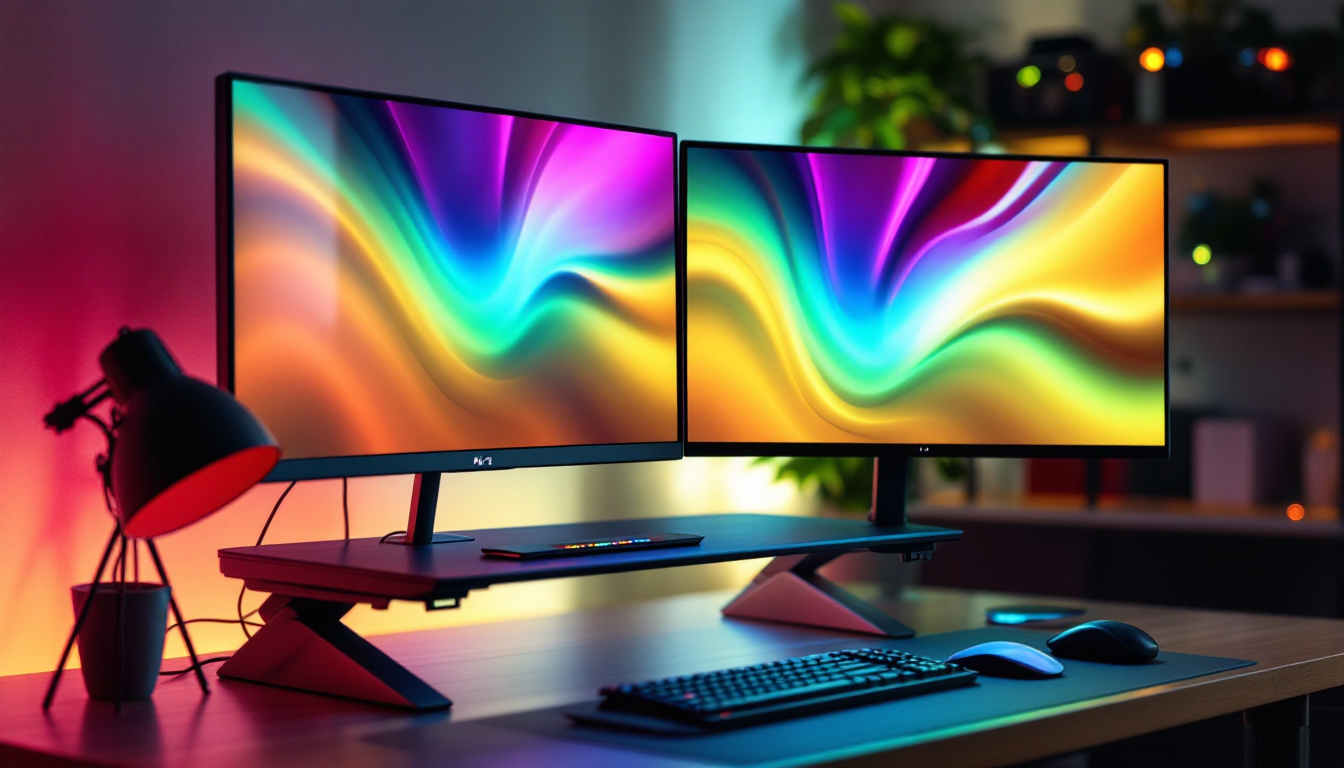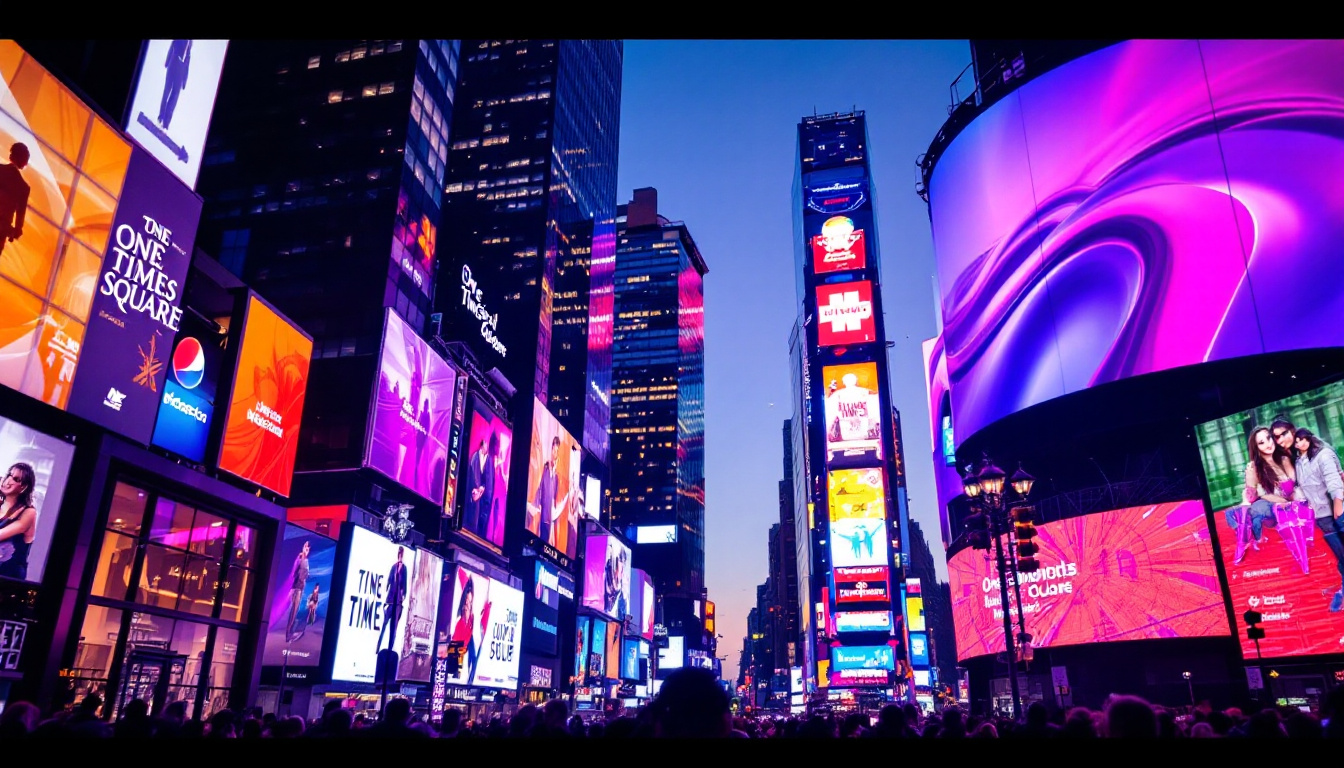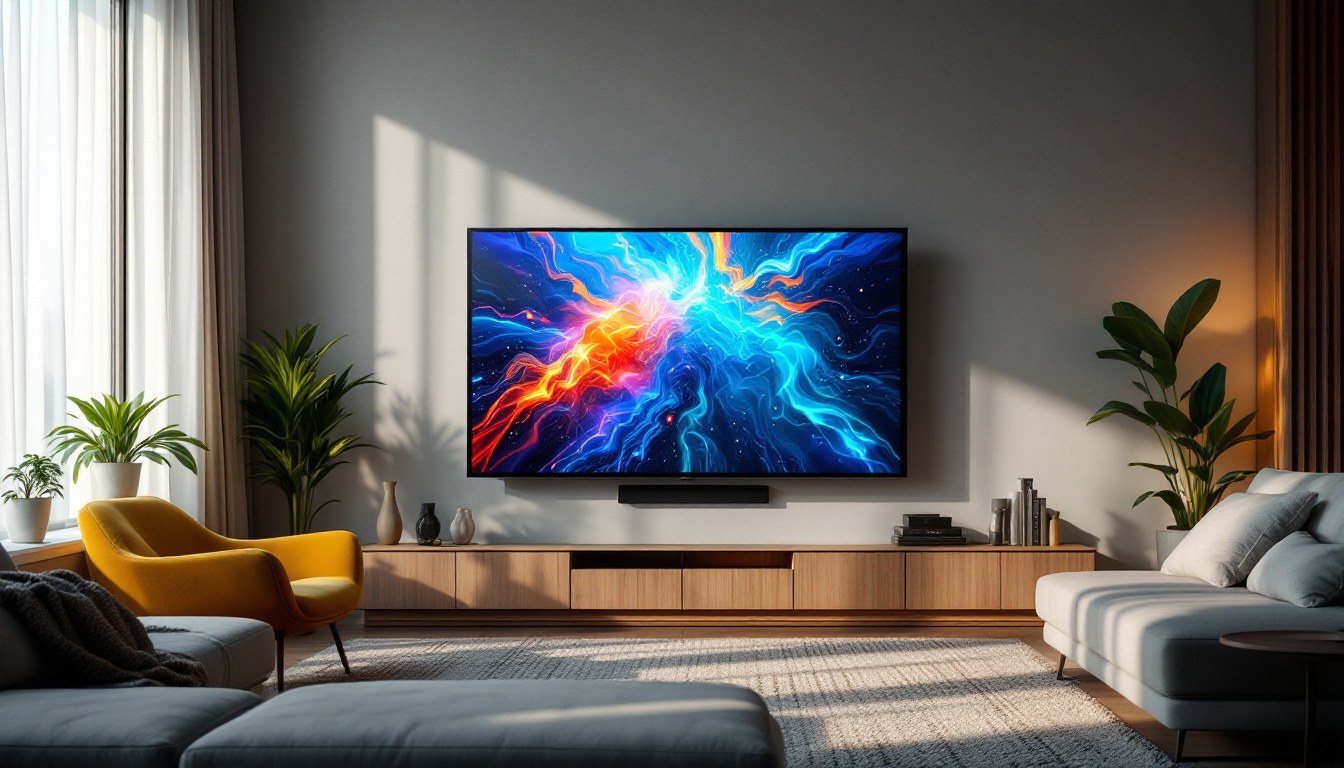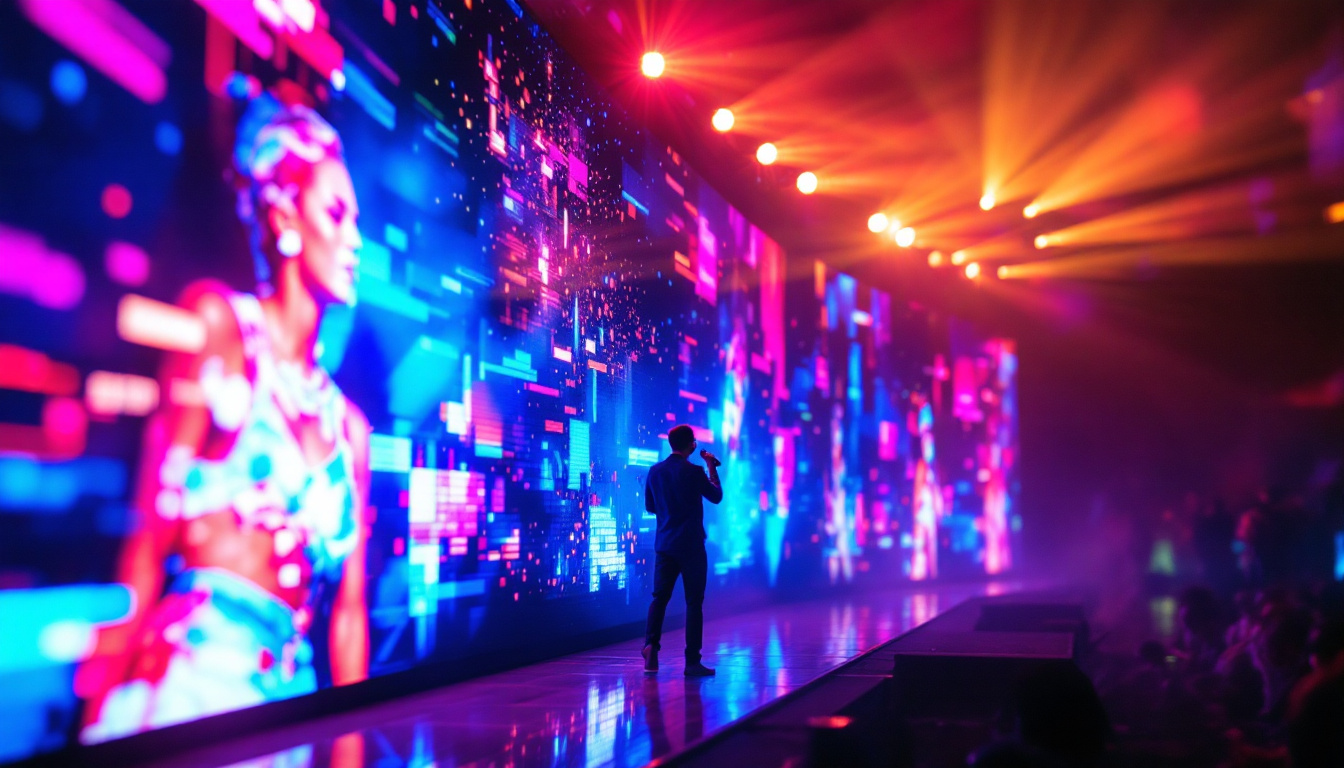In the modern world of digital displays, video walls have emerged as a powerful tool for communication, advertising, and entertainment. Among the various configurations available, the single portrait video wall stands out for its unique aesthetic and functional advantages. This article delves into the intricacies of LED displays, focusing on the single portrait setup and its applications across different sectors.
Understanding Video Walls
Video walls are large displays made up of multiple screens that work together to present a cohesive image or video. They are often used in public spaces, control rooms, and corporate environments to convey information effectively. The technology behind video walls has evolved significantly, with LED displays becoming the preferred choice for many installations.
The Basics of LED Technology
LED, or Light Emitting Diode, technology is at the heart of modern video walls. Unlike traditional LCD screens, LED displays utilize a series of small diodes to produce light, resulting in brighter images and deeper blacks. This technology allows for greater flexibility in screen size and shape, making it ideal for creating large-scale video walls.
One of the key advantages of LED displays is their energy efficiency. Compared to older technologies, LED screens consume significantly less power while delivering superior image quality. This efficiency not only reduces operational costs but also aligns with the growing demand for sustainable solutions in technology. Additionally, LED technology boasts a longer lifespan, which means fewer replacements and less electronic waste, further supporting eco-friendly initiatives.
Types of Video Walls
Video walls can be categorized based on their configuration and intended use. The most common setups include landscape, portrait, and curved formats. Each configuration has its unique advantages, with portrait video walls gaining popularity for specific applications.
Portrait video walls are typically taller than they are wide, making them ideal for displaying content that benefits from vertical orientation, such as social media feeds, advertisements, and informational displays. This format allows for a more immersive experience, particularly in spaces with high ceilings or narrow viewing angles. Moreover, the adaptability of portrait video walls enables businesses to create dynamic advertising campaigns that can capture the attention of passersby, enhancing engagement and driving traffic to their products or services.
In addition to portrait and landscape configurations, curved video walls are becoming increasingly popular in immersive environments, such as museums and entertainment venues. These installations can wrap around corners or create a panoramic effect, enveloping viewers in a visually stunning experience. Curved video walls are particularly effective for showcasing high-resolution content, as they can create a sense of depth and dimension that flat screens cannot achieve. As technology continues to advance, the possibilities for video wall configurations are expanding, allowing for even more creative and impactful displays.
The Single Portrait Video Wall
A single portrait video wall consists of a single screen or a series of screens arranged in a portrait orientation. This configuration is particularly effective for environments where vertical content is prevalent. The single portrait setup offers a streamlined appearance, making it a popular choice for retail spaces, lobbies, and event venues.
Advantages of Single Portrait Configuration
One of the primary benefits of a single portrait video wall is its ability to capture attention. The vertical orientation naturally draws the eye, making it an effective tool for advertising and branding. In retail environments, for instance, a portrait video wall can highlight products, promotions, or brand stories in a way that resonates with customers.
Moreover, the single portrait format is often easier to integrate into existing architectural designs. Whether placed in a narrow corridor or a spacious lobby, this configuration can enhance the overall aesthetic without overwhelming the space. The sleek lines and modern appearance of a portrait video wall can complement various design styles, from contemporary to traditional.
Applications in Various Industries
The versatility of single portrait video walls allows them to be utilized across a range of industries. In retail, they serve as dynamic displays that can showcase merchandise, provide information, or entertain customers while they shop. The engaging nature of video content in a portrait format can significantly enhance the shopping experience.
In corporate settings, single portrait video walls can be used for presentations, digital signage, or as part of a control room setup. Their ability to display real-time data and analytics in a visually appealing manner makes them invaluable for decision-making processes. Furthermore, they can be employed in event venues to provide information to attendees, display schedules, or highlight sponsors.
Technical Considerations
When planning a single portrait video wall, several technical factors must be considered to ensure optimal performance and viewer experience. These include resolution, brightness, viewing distance, and installation requirements.
Resolution and Image Quality
The resolution of the LED display is crucial for delivering high-quality images. A higher resolution means more pixels, resulting in sharper images and better detail. For a single portrait video wall, a resolution of at least Full HD (1920×1080) is recommended, although 4K (3840×2160) displays are becoming increasingly popular for their superior clarity.
Image quality is also influenced by the pixel pitch, which refers to the distance between individual pixels. A smaller pixel pitch results in a more detailed image, making it suitable for closer viewing distances. For environments where viewers will be positioned further away, a larger pixel pitch may suffice.
Brightness and Visibility
Brightness is another critical factor to consider, especially for outdoor installations or brightly lit indoor spaces. LED displays are available in various brightness levels, typically measured in nits. A brightness level of at least 500 nits is recommended for indoor environments, while outdoor displays may require brightness levels exceeding 1000 nits to remain visible in direct sunlight.
Additionally, the contrast ratio plays a significant role in image visibility. A higher contrast ratio ensures that colors appear vibrant and details remain visible, even in challenging lighting conditions. This is particularly important for advertising and promotional content, where clarity is essential for capturing audience attention.
Installation and Maintenance
Proper installation and maintenance are vital for the longevity and performance of a single portrait video wall. The installation process can vary depending on the complexity of the setup and the environment in which it is placed.
Installation Best Practices
When installing a single portrait video wall, it is essential to consider the structural integrity of the mounting surface. The weight of the screens, along with any additional equipment, must be supported adequately to prevent damage or accidents. Professional installation is often recommended to ensure that all safety protocols are followed.
Moreover, the positioning of the video wall should be carefully planned. Factors such as viewing angles, distance from the audience, and ambient lighting can significantly impact the effectiveness of the display. A well-placed video wall will enhance the viewer experience and maximize engagement.
Routine Maintenance
Regular maintenance is crucial for keeping a single portrait video wall in optimal condition. This includes routine cleaning of the screens to remove dust and fingerprints, which can affect image quality. Additionally, periodic checks of the hardware and software components ensure that any issues are addressed promptly, preventing downtime.
It is also advisable to have a maintenance schedule in place, which includes software updates and performance assessments. Keeping the display technology up to date not only enhances functionality but also extends the lifespan of the equipment.
Future Trends in Video Wall Technology
The landscape of video wall technology is continually evolving, with advancements in LED technology, software, and integration capabilities. As industries seek more innovative ways to engage audiences, several trends are emerging in the realm of video walls.
Increased Interactivity
One of the most significant trends is the move towards interactive video walls. Touchscreen capabilities and gesture recognition technologies are being integrated into video walls, allowing users to engage with content in real-time. This interactivity not only enhances viewer engagement but also opens up new possibilities for applications in education, entertainment, and retail.
For instance, in retail environments, interactive video walls can allow customers to browse products, access additional information, or even make purchases directly from the display. This level of engagement can significantly enhance the shopping experience and drive sales.
Integration with IoT and AI
The integration of Internet of Things (IoT) technology and artificial intelligence (AI) is also shaping the future of video walls. Smart video walls can collect data on viewer interactions, preferences, and behaviors, allowing businesses to tailor content more effectively. This data-driven approach can lead to more personalized experiences, ultimately improving customer satisfaction and loyalty.
Moreover, AI can enhance content management systems, enabling dynamic content updates based on real-time data. For example, a video wall in a transportation hub could display live departure information, weather updates, or promotional content based on current events.
Conclusion
A single portrait video wall offers a unique combination of aesthetic appeal and functional versatility, making it an ideal choice for various applications. From retail environments to corporate settings, this configuration can effectively capture attention and convey information in a visually engaging manner.
As technology continues to advance, the potential for single portrait video walls will only expand. With the integration of interactivity, IoT, and AI, these displays are set to become even more powerful tools for communication and engagement. Investing in a single portrait video wall not only enhances the viewer experience but also positions businesses at the forefront of digital innovation.
In a world where visual communication is paramount, understanding the capabilities and advantages of single portrait video walls is essential for any organization looking to make a lasting impact.
Discover LumenMatrix’s Innovative LED Solutions
Ready to elevate your space with the captivating allure of a single portrait video wall? LumenMatrix is at the forefront of LED display technology, offering a wide array of solutions that transform any environment into a dynamic visual experience. Whether you’re looking to enhance your retail space, engage audiences in corporate settings, or create interactive installations, our cutting-edge products are designed to meet your needs. From Indoor and Outdoor LED Wall Displays to Custom and All-in-One LED solutions, our displays are crafted to deliver unparalleled clarity and impact. Check out LumenMatrix LED Display Solutions today and step into the future of visual communication.

